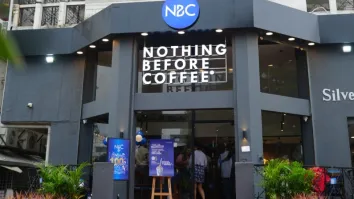
China's on-premise coffee sector reached US$9.6 billion in 2018: study
However, it is expected to grow at a slower rate in the next years due to the country’s thriving tea shops.
China’s on-premise coffee sector has experienced stronger growth in recent years, with the sector reaching an estimated RMB64.7 billion (US$9.6 billion) last year, up by 7.5% compared to 6% growth between 2016-17.
Market intelligence agency Mintel forecasts this sector to grow at a slower CAGR (compound annual growth rate) of 6% between 2019-23. It also estimated that outlets shrank by 2% in 2017-18 due to slower new store openings compared to stores closing down. However, this gap is narrowing compared to the 4% decline in 2016-17.
Looking ahead, they see positive volume growth in the next two years, growing 0.6% between 2018-19, and a further 1.2% between 2019-20 to reach an estimated 74,000 coffee houses by 2020.
“With the growing momentum of new retail coffee shops, and an increasing number of international and domestic brands entering the market, the industry will see positive growth rates over the next two years. However, this growth will slow down, largely due to Chinese consumers’ traditional behaviour of drinking tea and the country’s thriving tea shops.” Mintel’s Associate Food and Drink Research Analyst Belle Wang explained.
Convenient stores versus traditional coffee houses
Mintel research also revealed that 52% of Chinese consumers buy coffee at convenience stores compared to 44% who purchase it from a traditional coffee house chain. One in ten heavy coffee consumers drink their coffee at convenience stores as compared to 5% who do so at traditional coffee houses.
“There is an opportunity for new retail coffee houses to catch up in terms of popularity by offering aggressive discounts and delivery service. That being said, Big discounts alone will not be sufficient, as discounting is neither the best nor a sustainable strategy for a long-term business plan. There needs to be other merits such as offering healthy mix-and-match meal deals.” Wang continued.
Latte, cappuccinos top choices for consumers
More than half of on-premise coffee consumers order lattes (54%) or cappuccinos (52%). These are followed by mocha (45%), Americano (38%), flavoured coffee (36%), espresso (26%) and cold brew coffee (23%). Just over one in five (22%) on-premise coffee consumers say they order coffee mixed with plant protein milk.
“However, only offering basic coffee selections makes it difficult to stand out in the homogenous coffee marketplace and attract more coffee consumers. As such, coffee houses can take inspiration from tea shop drinks by making their offerings more visually appealing and ‘instagramable’ in order to draw attention and pique consumer interest.” Belle concluded.
























